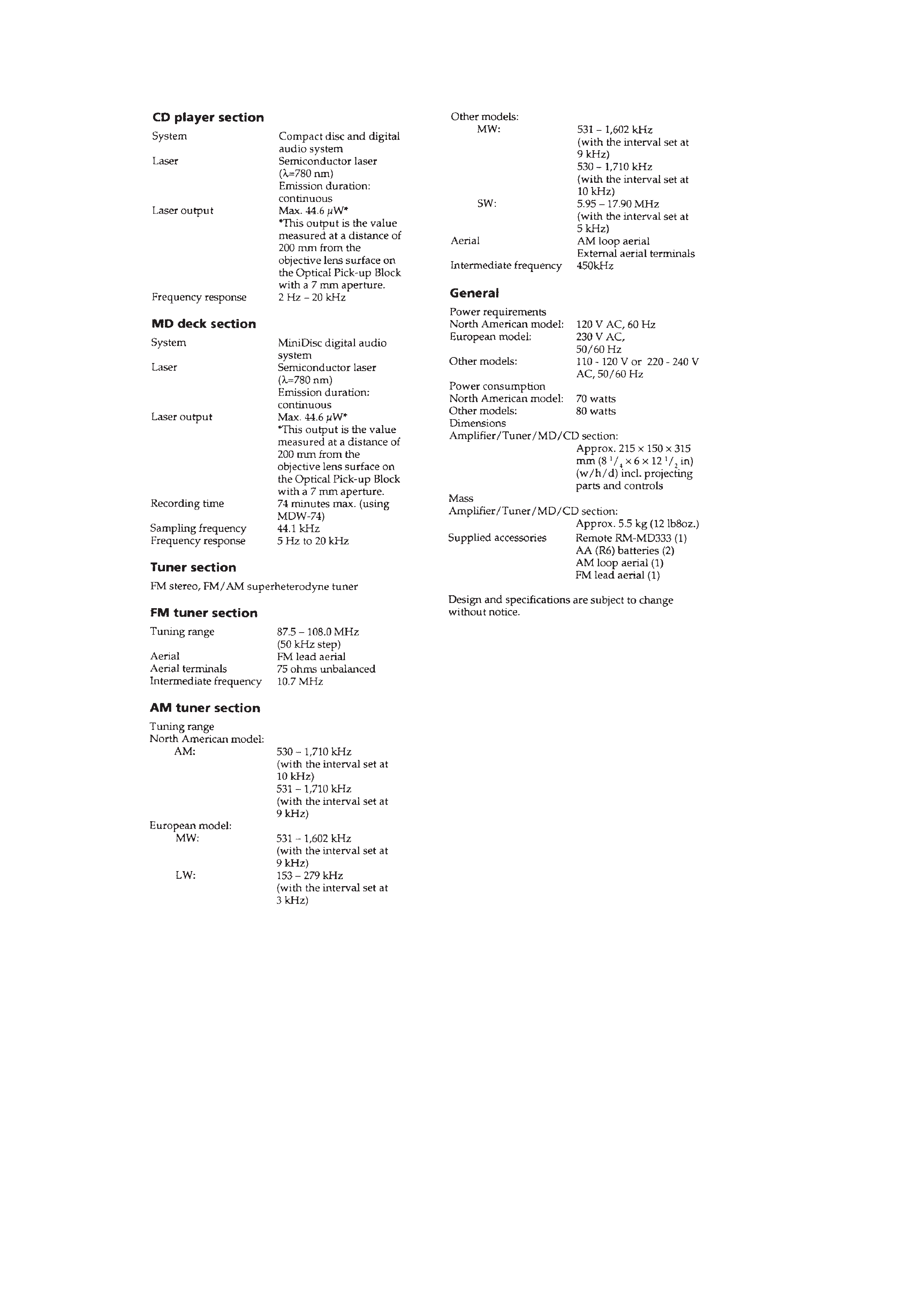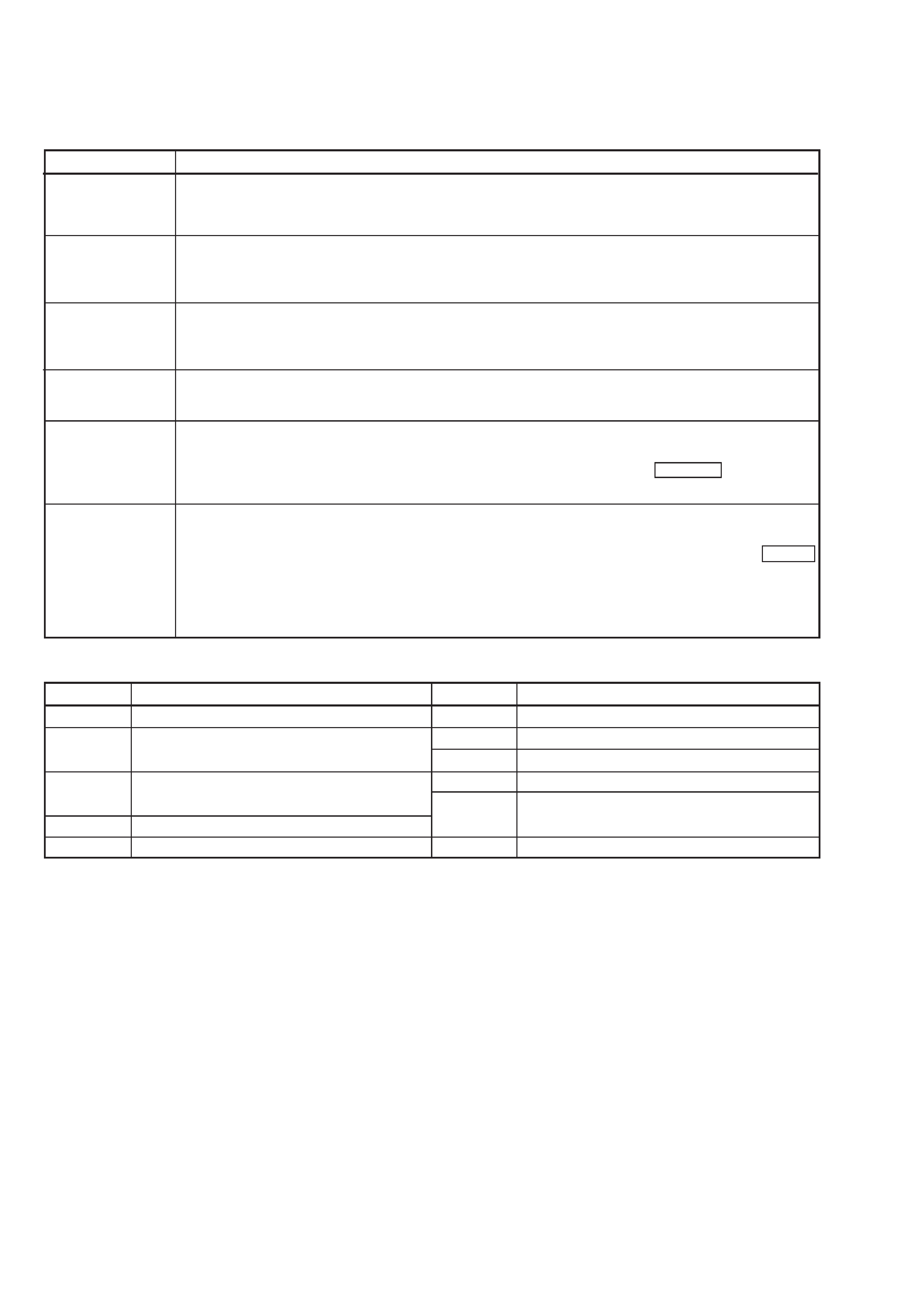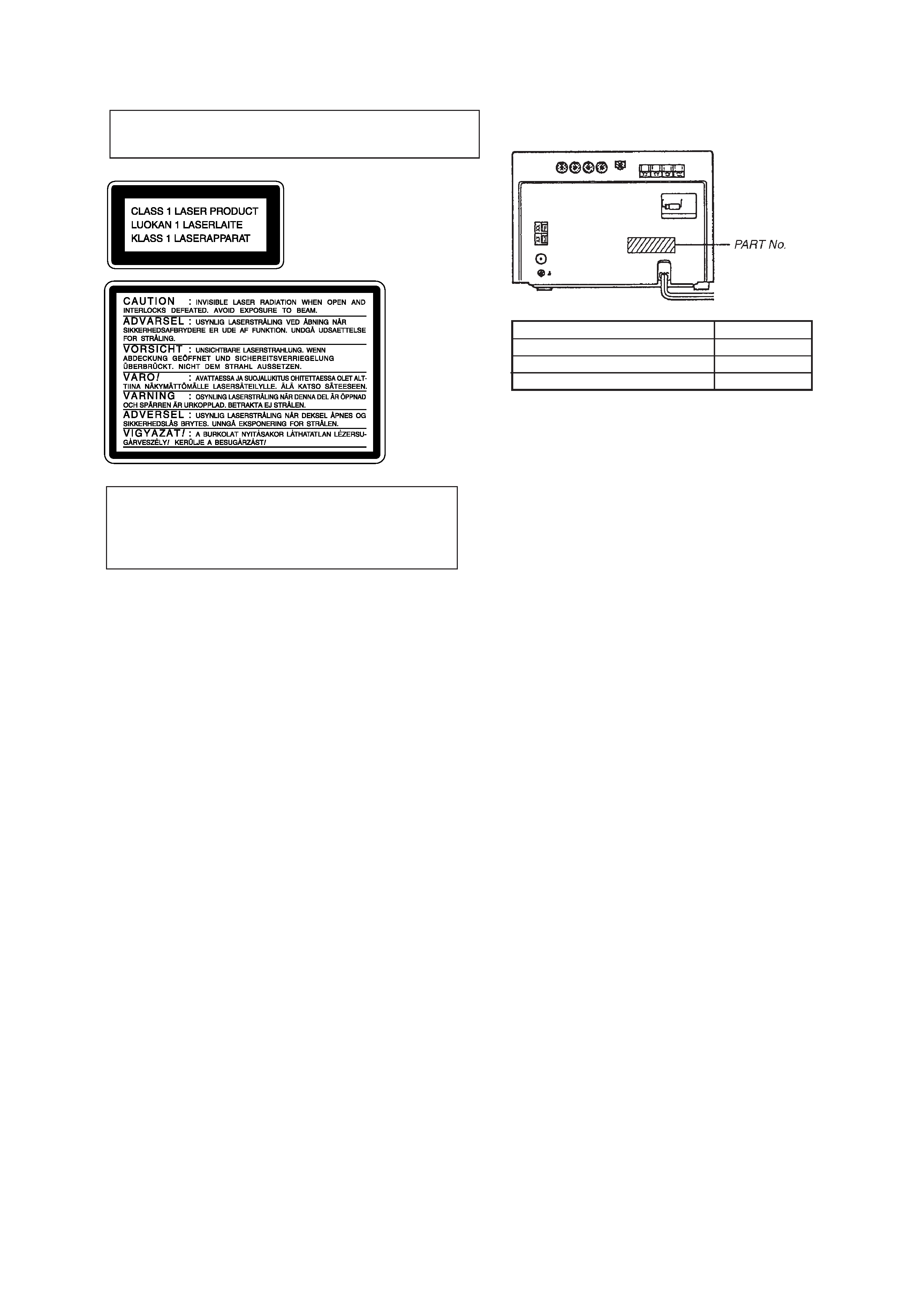
1
MICROFILM
HCD-MD333
SPECIFICATIONS
SERVICE MANUAL
COMPACT DISC DECK RECEIVER
-- Continued on next page --
US Model
Canadian Model
AEP Model
UK Model
E Model
Australian Model
Tourist Model
HCD-MD333 is the amplifier, CD, MD and
tuner section in DHC-MD333.
Model Name Using Similar Mechanism
NEW
Mechanism Type
CDM13C-5BD19
Base Unit Type
BU-5BD19
Optical Pick-up Type
KSS-213B/K-N
Model Name Using Similar Mechanism
NEW
Mechanism Type
MDM-3J
Optical Pick-up Type
KSM-260A-JIN
CD
SECTION
MD
SECTION

2

3
SELF-DIAGNOSIS FUNCTION
The self-diagnosis function consists of error codes for users which are displayed automatically when errors occur, and error codes which
show the error history in the test mode during servicing. For details on how to view error codes for users, refer to the following box in the
instruction manual. For details on how to perform checks during servicing, refer to the following "Procedure for Using the Self-Diagnosis
Function (Error History Display Mode)".
Procedure for Using the Self-Diagnosis Function (Error History Display Mode)
Note: Perform the self-diagnosis function in the "error history display mode" in the test mode. The following describes the least required
steps. Be careful not to enter other modes by mistake. If other modes are set accidentally, press the ^ (CD) button to exit that
mode.
1. With the power off, press the ^ (MD) button while pressing the PLAY MODE button.
2. Rotate the VOLUME knob until "ERR DP MODE" is displayed.
3. Pressing the p (CD) button sets the error history mode and displays "total rec".
4. Select the contents to be displayed or executed using the VOLUME knob.
5. Pressing the 6 (CD) button displays or executes the contents selected.
6. Pressing the 6 (CD) button another time returns to step 4.
7. Pressing the ^ (CD) button displays "ERR DP MODE" and exits the error history mode.
8. To exit the test mode, press the REPEAT button. The unit sets into the STANDBY state, and the test mode ends.

4
ITEMS OF ERROR HISTORY MODE ITEMS AND CONTENTS
Selecting the Test Mode
Display
total rec
total play
retry err
total err
err history
er refresh?
Details of History
No error
Disc error. Cannot read PTOC
(Disc is ejected out)
Disc error. UTOC error
(Disc is not ejected out)
Loading error
Cannot read address (Servo has deviated)
Displays the recording time in the form of "r
h".
The displayed time is the total number of hours the laser is high power, which is about one-fourth of the actual
recording time. The time is displayed in decimal digits between 0h to 65535h.
Displays the playback time in the form of "p
h".
The displayed time is the total actual play time. The paused time is not counted. The time is displayed in decimal
digits between 0h to 65535h.
Displays the total number of retries during recording and retry errors during playback in the form of "r
p".
"r" indicates the retries during recording while "p" indicates the retry errors during playback. The number of
retries is displayed in hexadecimal digits between 00 to FF.
Displays the total number of errors in the form of "total
".
The number of errors is displayed in hexadecimal digits between 00 to FF.
Displays the 10 latest errors in the form of "0
E@@".
The
indicates the history number. The smaller the number, the newer is the error. (00 is the latest error.)
The @@ indicates the error code. Refer to the following table for details. Rotate the VOLUME knob to switch
the error history.
Mode which erases all the error histories.
The error history serves as a reference for when to replace the optical pick-up. Perform this procedure when the
optical pick-up has been replaced in order to erase past error histories and not at other times. Press the p (CD)
button when "er refresh??" is displayed. The history will be erased and "Complete!" will be displayed momentarily.
Be sure to check the following when this mode has been executed.
· Check that the data has been erased.
· Perform recording and playback, and check that the mechanism operates normally.
Table of Error Codes
Error Code
E00
E01
E02
E03
E04
E05
E06
E07
E08
E09
E0A
FOK has deviated
Unfocused (Servo has deviated)
Recording retry
Recording retry error
Play retry error
(Access error)
Playback retry error (C2 error)
Details of Error
Error Code
Details of Error

5
CAUTION
Use of controls or adjustments or performance of procedures
other than those specified herein may result in hazardous ra-
diation exposure.
Notes on chip component replacement
· Never reuse a disconnected chip component.
· Notice that the minus side of a tantalum capacitor may be
damaged by heat.
Flexible Circuit Board Repairing
· Keep the temperatur e of soldering iron around 270°C
during repairing.
· Do not touch the soldering iron on the same conductor of the
circuit board (within 3 times).
· Be careful not to apply force on the conductor when soldering
or unsoldering.
Laser component in this product is capable of emitting radiation
exceeding the limit for Class 1.
This appliance is classified as
a CLASS 1 LASER product.
The CLASS 1 LASER PROD-
UCT MARKING is located on
the rear exterior.
This caution
label is located
inside the unit.
SAFETY-RELATED COMPONENT WARNING !!
COMPONENTS IDENTIFIED BY MARK ! OR DOTTED LINE
WITH MARK ! ON THE SCHEMATIC DIAGRAMS AND IN
THE PARTS LIST ARE CRITICAL TO SAFE OPERATION.
REPLACE THESE COMPONENTS WITH SONY PARTS
WHOSE PART NUMBERS APPEAR AS SHOWN IN THIS
MANUAL OR IN SUPPLEMENTS PUBLISHED BY SONY.
ATTENTION AU COMPOSANT AYANT RAPPORT
À LA SÉCURITÉ!!
LES COMPOSANTS IDENTIFIÉS PAR UNE MARQUE !SUR
LES DIAGRAMMES SCHÉMATIQUES ET LA LISTE DES
PIÈCES SONT CRITIQUES POUR LA SÉCURITÉ DE
FONCTIONNEMENT. NE REMPLACER CES COMPOSANTS
QUE PAR DES PIÈCES SONY DONT LES NUMÉROS
SONT DONNÉS DANS CE MANUEL OU DANS LES
SUPPLÉMENTS PUBLIÉS PAR SONY.
PARTS No.
4-993-849-5
4-993-849-6
4-993-849-7
MODEL
AEP, UK, EE model
MY, SP, JE, HK, AR, AUS model
US, CND model
MODEL IDENTIFICATION
-- BACK PANEL --
· Abbreviation
CND : Canadian model
EE
: East European model
HK
: Hong Kong model
SP
: Singapore model
MY
: Malaysia model
AR
: Argentine model
AUS : Australian model
JE
: Tourist model
